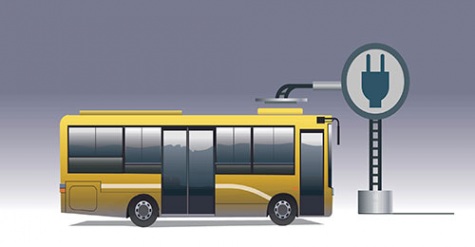Howard County to Add Two Electric School Buses to Its Fleet

A journey of a thousand miles begins with two electric busses.
HCPSS will introduce two electric school busses in the 2021-2022 school year. The busses are part of a pilot program funded by the state. This addition is following a slew of county-level environmental commitments in recent years to address climate change at a local level.
The two new electric busses will join Howard County’s 478 exclusively diesel bus fleet that drives over 31,000 miles daily, according to HCPSS. This addition is Howard County’s first big step towards decarbonizing the transportation sector.
“There’s so much learning that will happen. We’ll learn how many miles they can drive and whether the energy they can hold at the end of the routes is sellable. Most importantly, we’ll learn what the true costs are rather than the costs on paper,” says Long Reach High School Economics teacher Mr. Sandersen. “It becomes a bit of an experiment.”
HCPSS Director of Transportation David Ramsay says the county anticipates some trial and error during the transition to electric busses. He says drivers will be trained on how to optimize energy usage. The county is going to be looking at electric bus performance, sustainability, and reliability.
Mr. Ramsay believes that society will become more open to electric vehicles as more are introduced. “When we see something, and we’re immersed in it, and we believe in it, it becomes part of the fabric of what we do and what we believe,” he says.
The traditional school bus runs on diesel fuel and emits a large amount of carbon dioxide. According to Greenshields, school busses in the United States put nine million tons of carbon dioxide into the atmosphere every year. Electric busses are battery-powered, so they emit less carbon dioxide.
Scientists attribute the rise in average global temperatures to the steady increase of carbon dioxide in the atmosphere. The additional carbon dioxide in the atmosphere causes heat radiating off the Earth to be trapped rather than released into space.
As described by Science teacher Ms. Bell, carbon emissions “thicken the [atmosphere] like a blanket.” This increase is primarily caused by burning fossil fuels such as coal, gasoline, and diesel fuel.
Decarbonization efforts have increased as climate change has increasingly ravaged the Earth. Scientists have established a rise in average global temperatures since 1901. According to NASA, climate change causes an increase in the severity of weather events, rising sea levels due to melting ice caps, and unprecedented coastal flooding.
“So much has to happen relatively quickly, but I like electric busses as one of the first steps,” says Mr. Sandersen.
Your donation will support the student journalists of Wilde Lake High School. Your contribution will allow us to purchase equipment and cover our annual website hosting costs.












![Ezra playing Sims on a Sunday afternoon. He says the reason he plays varies from checking on [his] households or as a form of escapism.](https://wlhspawprint.com/wp-content/uploads/2022/06/Ezra-1-475x351.jpg)
















